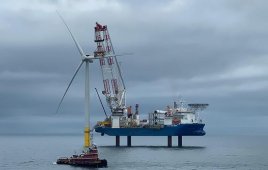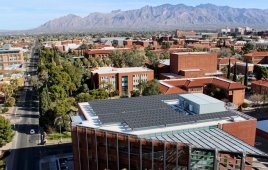Rapid penetration of renewables is significantly changing the energy landscape in the United States. Decreases in production costs, federal tax incentives, state renewable portfolio standards, and the Environmental Protection Agency’s Clean Power Plan are some of the main drivers for rapid renewable development. To support these policies, additional transmission capacity will need to be built to transmit energy from remote areas where the renewable generators are located to major load centers.
The next decade has a large number of proposed projects to modernize the North American transmission infrastructure. Almost 900 different lines and nearly 42,000 miles of infrastructure projects are proposed in North America in this time period. The Edison Electric Institute indicates that around $48 billion worth of transmission investments are expected between 2015 and 2025. Of this total, projects supporting the integration of renewable resources represent approximately $22 billion (46%). This endeavor will require careful planning and coordination of new power generation and transmission projects, as the scope and construction span of each project can be quite different and complex.

Location and timing are two critical elements of transmission and generation investments. Rapid growth in renewable capacity is not always accompanied with rapid transmission expansions. For example, a significant overbuild of renewables before the completion of transmission lines occurred between 2007 and 2011 in West Texas.
The bar chart illustrates the total wind generation capacity in West Texas and total transmission capacity from West Texas to other areas between 2002 and 2015. The figure shows that wind generation capacity in West Texas increased by around 6,400 MW between 2007 and 2011, while there was no significant transmission capacity addition in the same period. Therefore, transmission capacity between West Texas and major load centers in Texas was notably insufficient to bring all the electricity to these areas.
This transmission capacity discrepancy caused real-time operational difficulties, congestion and reliability issues in the Electric Reliability Council of Texas (ERCOT) footprint. As shown in Figure 3, ERCOT had to occasionally curtail wind generation to keep the transmission network within its physical limits in 2011 and 2012. These curtailments, demand-supply imbalances in the West and negative market bids by the wind generators occasionally produced negative real-time prices in these years
For the rest of the white paper: https://goo.gl/VPzvxz
Filed Under: Policy




